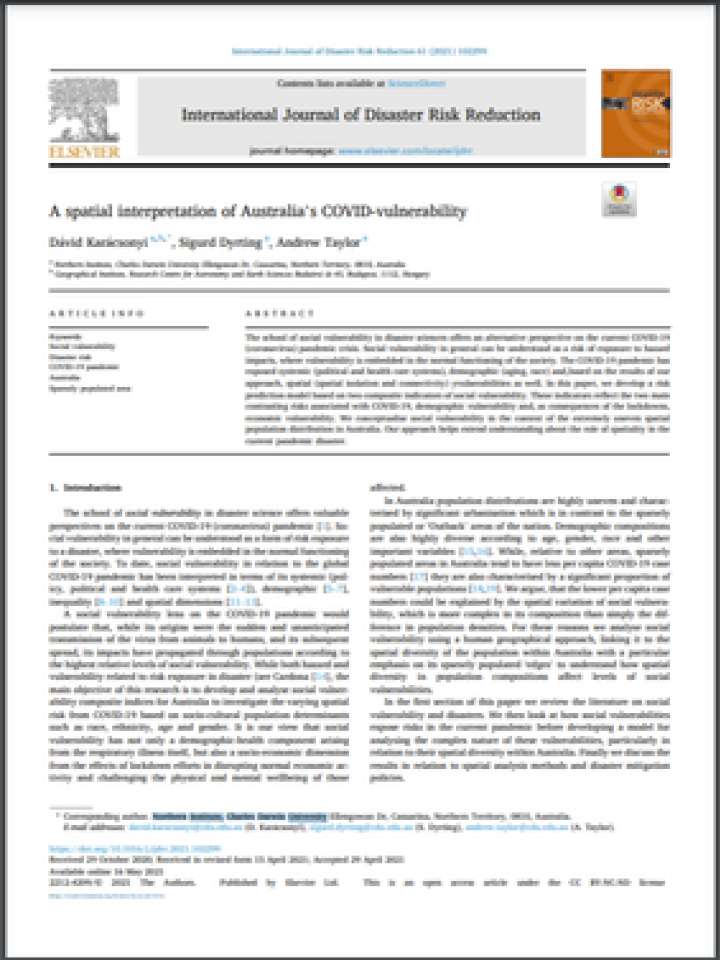A spatial interpretation of Australia's COVID-vulnerability
In this paper, the authors develop a risk prediction model based on two composite indicators of social vulnerability. The school of social vulnerability in disaster sciences offers an alternative perspective on the current COVID-19 (coronavirus) pandemic crisis. Social vulnerability in general can be understood as a risk of exposure to hazard impacts, where vulnerability is embedded in the normal functioning of the society. The COVID-19 pandemic has exposed systemic (political and health care systems), demographic (aging, race) and,based on the results of our approach, spatial (spatial isolation and connectivity) yvulnerabilities as well. These indicators reflect the two main contrasting risks associated with COVID-19, demographic vulnerability and, as consequences of the lockdowns, economic vulnerability.
In summary, the spatial variation of vulnerabilities which is evident from the modelling highlights that this pandemic should not only be presented as a crisis for the health and economies of nations. Our study for Australia shows certain sub-populations are highly vulnerable relative to others and that the scale of vulnerability is variable by geography. To truly minimize health and other effects from this and future pandemics, policy attention should be re-focused towards addressing underlying inequalities evident in almost all nations, including a rich and prosperous Australian society. While the speed and magnitude of the pandemic's spread globally was rapid, leading to policy-on-the-run, planning for future pandemics must recognise the potential role and impacts of vulnerabilities.
Explore further
